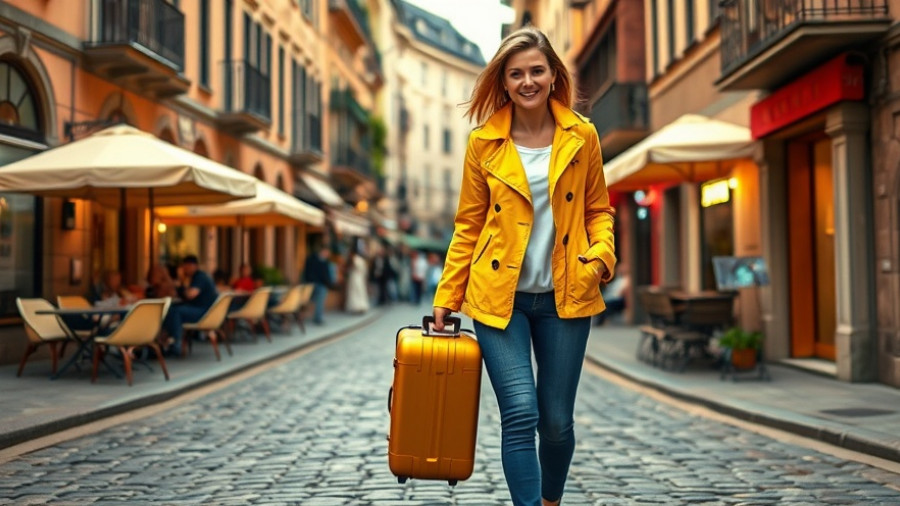
Solo Travelers: Shaping the Future of Travel Retail
As the world emerges from the shadow of the pandemic, a significant shift is occurring in the travel industry. Solo travelers, once a niche audience, are set to redefine the landscape of travel retail. Recent research from m1nd-set reveals that the solo traveler market, already worth $482.5 billion, is projected to double in the next five years, surpassing $1 trillion by 2030. This unprecedented growth indicates not only a rise in numbers but also a change in shopping behaviors and expectations.
The Intentional Shopper
What is particularly striking about this demographic is their intent and purchasing behavior. While solo travelers might visit duty-free stores less frequently — only about 4 in 10 — they convert at a remarkable rate of 71%. This is significantly higher than the global average of 66%. Moreover, their average spend is notable, with solo shoppers spending approximately $133 compared to $129 for average travelers.
Within airport retail environments, the profile of solo shoppers is predominantly Gen X business travelers, where 42% cite business as their reason for travel. However, a trend towards female empowerment is apparent, as women lead solo travel bookings, showcasing an increase in confidence amongst female travelers.
The Unique Needs of Solo Shoppers
Understanding the motivations and preferences of solo travelers is essential for retailers looking to capitalize on this booming market. The study highlights that over half (57%) of solo purchases are self-gift purchases, suggesting a market that values authentic experiences and personalized products. Solo travelers tend to prioritize service quality, exclusivity, and store atmosphere, making them a discerning group of consumers.
Interestingly, their shopping patterns differ significantly across different travel sectors, notably in maritime retail. On ferries, most solo travelers are Gen Xers, with about 78% planning purchases ahead of time. This level of intent is paralleled by heightened conversion rates, indicating that understanding these preferences could lead to even greater sales opportunities.
Connection Through Engagement
One fascinating finding is that a large part of the purchasing decision for solo travelers is linked to staff engagement. In an age where online shopping dominates, the human connection remains crucial. Dr. Peter Mohn of m1nd-set points out that 86% of solo interactions with sales staff on ferries positively influenced buying choices. This emphasizes the need for well-trained and approachable staff in retail environments targeting solo travelers.
On cruise ships, the dynamics shift slightly as younger Millennials (52%) dominate solo travel. This group shows a proclivity for impulse purchases (29%, compared to 20% overall), which indicates that creating engaging shopping experiences can significantly impact conversion rates.
The Broader Context of Solo Travel
According to the Travel Trends Report 2025 published by Forbes, the rise of solo travel is not a mere fad but a cultural movement influenced by factors like the pandemic and ongoing conversations about mental health. Over 76% of Millennials and Gen Z are more inclined to opt for solo adventure trips, appreciating the opportunity to pursue personal interests without the need for group consensus.
Destinations such as Spain, Italy, and Greece are becoming hotspots for solo travelers looking for empowerment and self-connection. However, this trend also brings challenges for the hospitality industry, which must adjust amenities and offerings to meet the specific needs of this unique segment.
Future Trends and Opportunities
The growth of solo travel opens the door for innovative hospitality trends such as flexible dining arrangements at hotels and venues designed to cater to solo travelers' needs. For example, Hilton’s concept of "MeMooning" speaks to the growing demand for personalized service and dining experiences tailored to those traveling alone.
With 34% of travelers expressing a desire to undertake solo journeys by the end of 2025, the travel industry must rethink its strategies in hotel development, staff training, and customer engagement. The opportunities here are monumental, as meeting the specific preferences of solo travelers could lead to a significant competitive advantage in the burgeoning market.
As we look ahead, it’s clear that solo travelers are more than just a growing demographic; they represent a shift in how people engage with travel and consumption. For those in the travel industry, now is the time to adapt, innovate, and place the needs of these discerning adventurers at the center of strategic planning.
Contact us today at www.sitinmyseats.com for more information or to book a free travel consultation!
 Add Row
Add Row  Add
Add 




Write A Comment